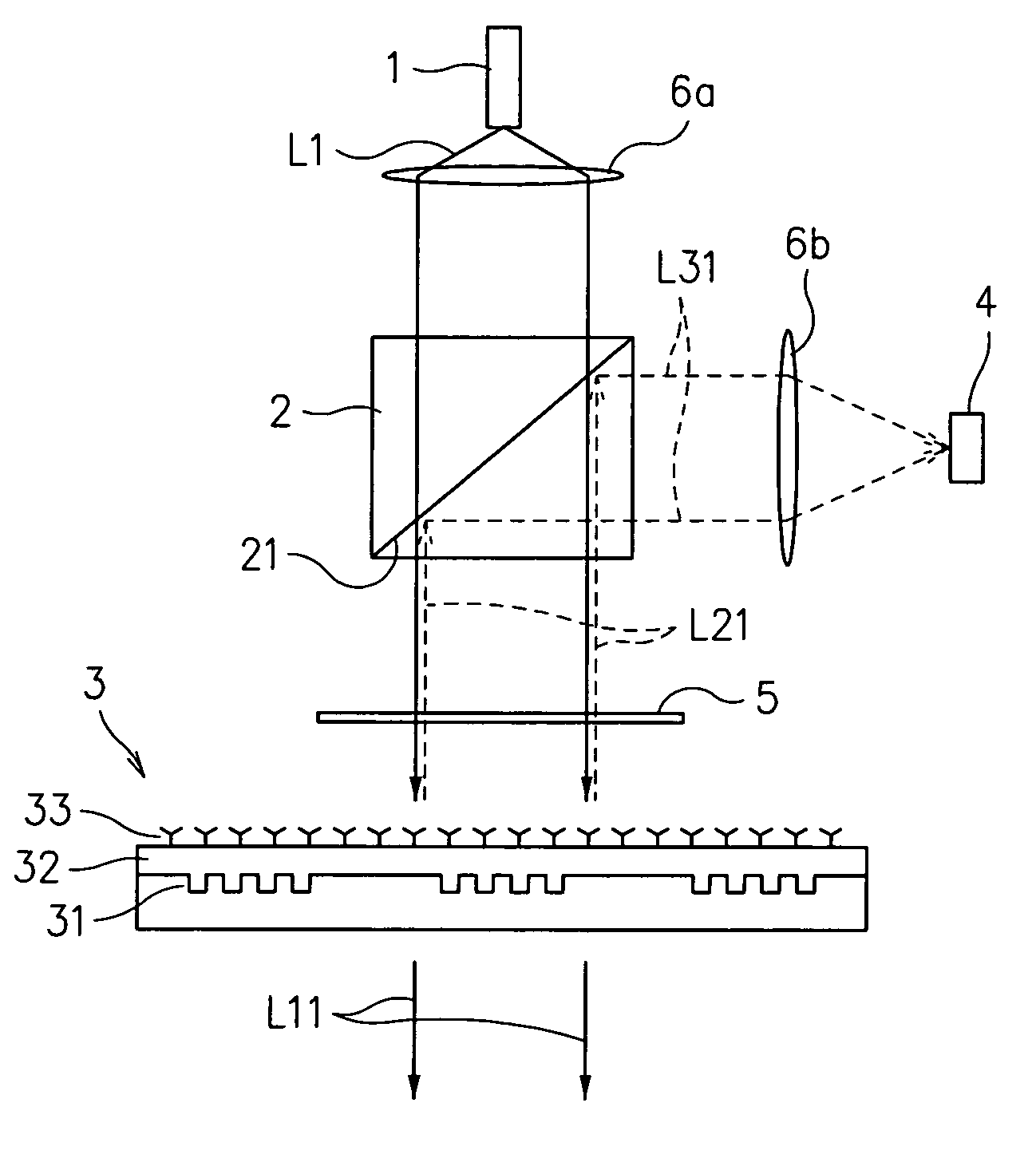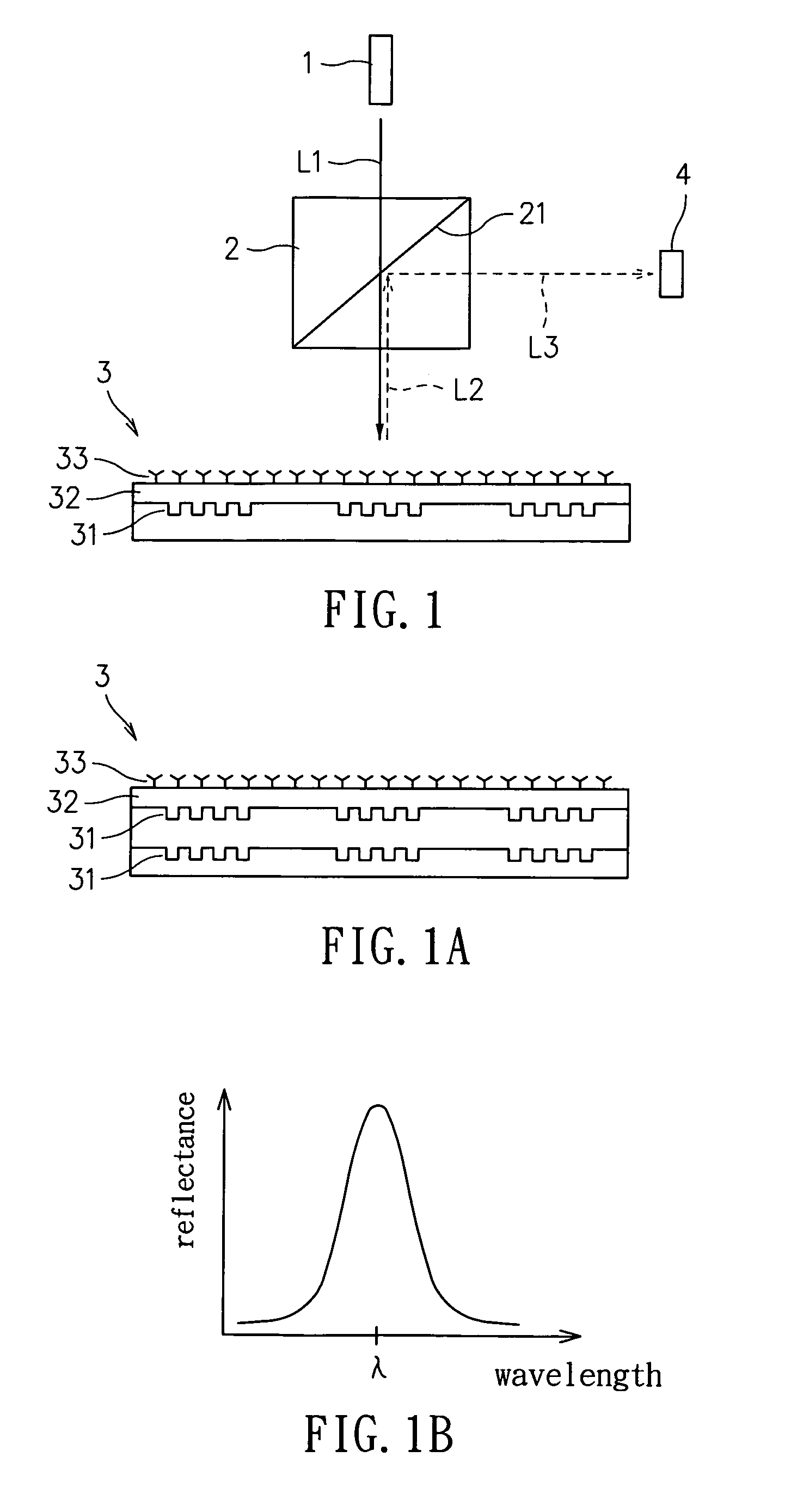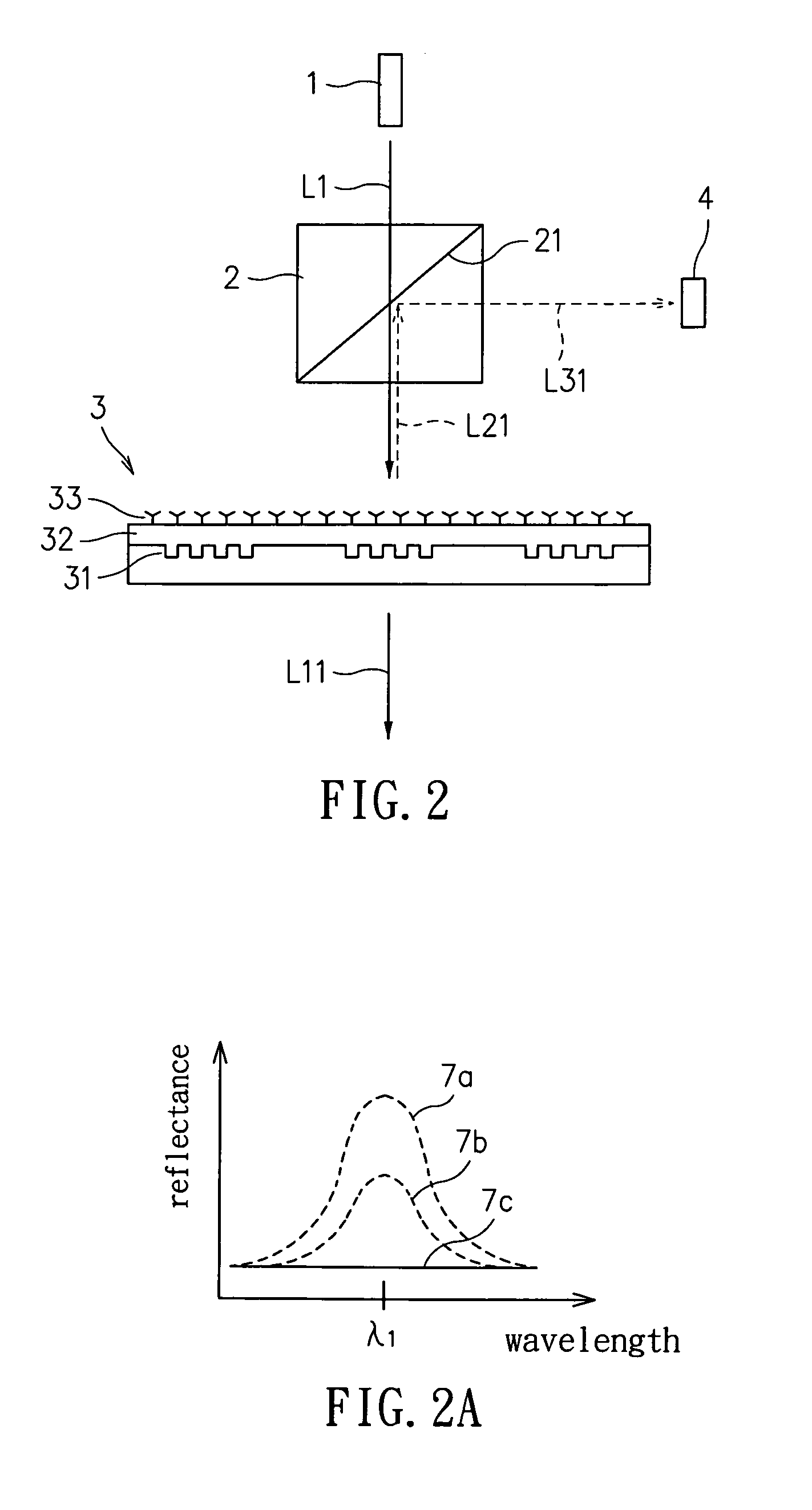Optical waveguide bio-sensing device
a biosensing device and optical waveguide technology, applied in the field of optical waveguide biosensing devices, can solve the problems of inability to provide dynamic information of real-time interaction, inability to detect high-sensitivity interactions, etc., to achieve the effect of simplifying the optical system using the present invention and high sensitivity detection techniques
- Summary
- Abstract
- Description
- Claims
- Application Information
AI Technical Summary
Benefits of technology
Problems solved by technology
Method used
Image
Examples
first embodiment
[0046]Please refer to FIG. 1, which is a schematic diagram showing an optical waveguide bio-sensing device wherein the grating chip not bounded with any bio-molecule according to the present invention. The optical waveguide bio-sensing device comprises a light source 1, a beam splitter 2, a grating chip 3 and a sensor 4. In the present invention, the light source 1 is a monochromatic laser or semiconductor light source with a wavelength λ within a range from 200 nm to 1700 nm. The beam splitter 2 with polarization is disposed on the optical path so that the monochromatic light with a wavelength λ travels through the beam splitter 2 and reaches the grating chip 3. The grating structure 3 comprising at least a grating structure 31 and a waveguide layer 32 on the grating structure 31 for receiving the monochromatic light split by the beam splitter 2, wherein a receptor 33 is provided on the waveguide layer 32. The grating structure 31 is a low refractive index grating structure. The gr...
second embodiment
[0049]Please refer to FIG. 3, which is a schematic diagram showing an optical waveguide bio-sensing device wherein the grating chip is not bounded with any bio-molecule according to the present invention. The optical waveguide bio-sensing device comprises a light source 1, a beam splitter 2, a grating chip 3 and a sensor 4. In the present embodiment, a first light concentrating element 6a is disposed between the light source 1 and the beam splitter 2 for light concentration and a second light concentrating element 6b is disposed between the grating chip 3 and the sensor 4 for light concentration. The light concentrating elements 6a and 6b can be implemented using lenses with light concentration. Moreover, in order to enhance the sensitivity of the system using the optical waveguide bio-sensing device, a quarter waveplate (¼λ) 5 is arranged in the optical path between the beam splitter 2 and the grating chip 3.
[0050]Therefore, the monochromatic light L1 emitted from the light source ...
third embodiment
[0052]Please refer to FIG. 5, which is a schematic diagram showing an optical waveguide bio-sensing device wherein the grating chip is not bounded with any bio-molecule according to the present invention. The optical waveguide bio-sensing device comprises a light source 1, a beam splitter 2, a grating chip 3, a sensor 4, a quarter waveplate 5 and light concentrating elements 60a and 60b. In the present embodiment, and quarter waveplate 5 and light concentrating elements 60a and 60b are disposed on the surfaces of the beam splitter 2. The quarter waveplate 5 is a planar surface with polarization and the light concentrating elements 60a and 60b are Fresnel surfaces with light concentration. Referring to FIG. 5A for a cross-sectional view of a Fresnel surface, the Fresnel surface comprises a plurality of concentric circular ridges. These circular ridges give the Fresnel surface a zigzag or sawtooth cross-section. Each sawtooth creates a tiny prism. By choosing appropriate powers for th...
PUM
 Login to View More
Login to View More Abstract
Description
Claims
Application Information
 Login to View More
Login to View More - R&D
- Intellectual Property
- Life Sciences
- Materials
- Tech Scout
- Unparalleled Data Quality
- Higher Quality Content
- 60% Fewer Hallucinations
Browse by: Latest US Patents, China's latest patents, Technical Efficacy Thesaurus, Application Domain, Technology Topic, Popular Technical Reports.
© 2025 PatSnap. All rights reserved.Legal|Privacy policy|Modern Slavery Act Transparency Statement|Sitemap|About US| Contact US: help@patsnap.com



